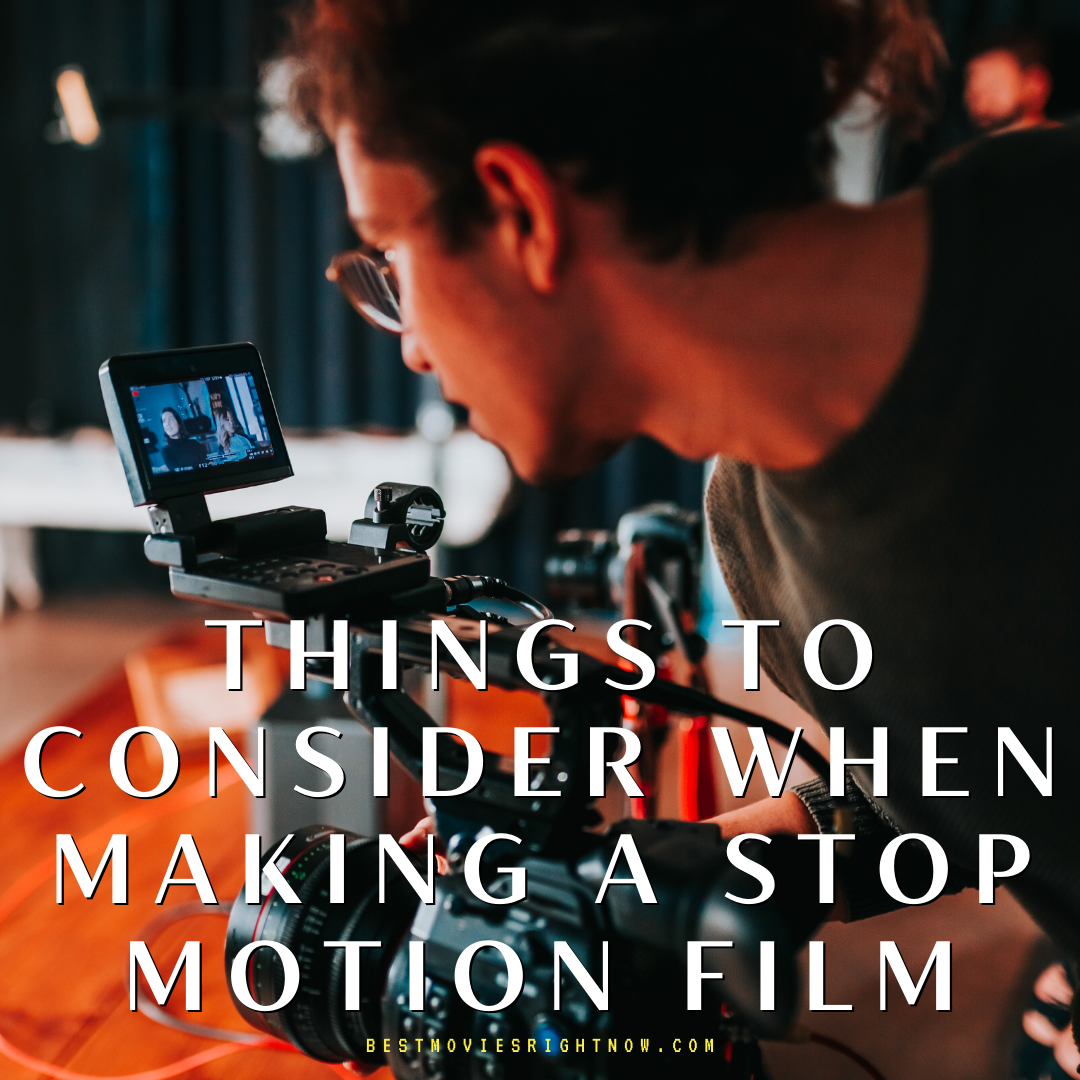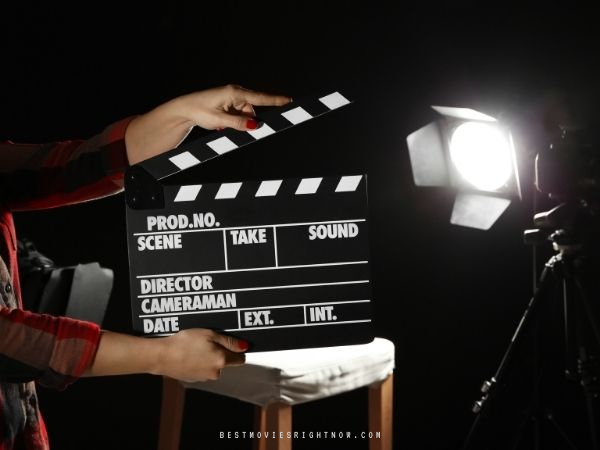There are several things to consider when embarking on the journey into stop motion filmmaking. Knowing the basics will provide you with a solid foundation to make your first film.

After you have a jump-off point and understand the things to consider when making a stop motion film, you’ll be able to expand your abilities overtime to produce work that brings your visions to life in progressively exciting and different ways.
Strategy
As you begin, you’ll need to decide whether you’re telling a story or showing a process. Once you’ve made this choice, gather your desired props, and create the background(s). The sets you provide for your characters is a vital piece of the filmmaking process (unless you’re using drawings on blank paper.)
Props for the characters in your film may range from dolls, action figures, homemade figurines, objects, drawings, and more. Before beginning, putting together a storyboard to keep track of the frames that need to be completed will help you stay organized.
Fully understanding your storyline and how you want the sequence of events to play out will help you create a baseline for your film. You can always make changes and adjustments, but you’ll want to have laid the groundwork to navigate the process more efficiently.

Lighting and Camera Placement
While making your stop motion film, you’ll need to be very regimented when it comes to lighting. Once you have your source of illumination established (ring lights are suitable), be sure to take some test shots. Set your characters up in various positions and check shadows and how the set and figures reflect the lighting. Additionally, be conscious of glare and light absorption during this process.
Camera placement is equally important. Set up a sturdy tripod and be sure to secure the area so there’s room to walk and maneuver around the set. The camera must stay precisely in the same place for a seamless, continuity-free scene. Take several shots of the background or set without props and characters on it to hide support pieces (which you can edit out digitally in post.)
Continuous Shooting
After establishing the lighting you want, and placing your camera, don’t change a thing! If you start moving your light and tripod, you’ll never be able to replicate that exact synchronization. This is where continuous shooting comes into play.
If for any reason, your lighting, camera, or tripod gets moved, you may have to start from the beginning. The most minimal of changes will be evident in your photographs. Shoot with purpose and take your time here—take extra photos if you need to. Going back and reshooting a frame or two isn’t an option.
You can always go back and delete extra photos. Setting up and shooting is the most tedious part of the whole process. Extra care and rough cutting throughout the shooting process will make the editing part of creating your feature much more fluid. Knowing the things to consider when making a stop motion film will undoubtedly help you produce something great!
If you enjoyed this list, I have a monthly membership for parents and educators that want to teach or supplement lessons with shows and movies.

“I absolutely love sharing movies with my kids as a way to teach them valuable lessons. It's like this awesome bonding experience where we all snuggle up on the couch with some popcorn, and I get to see their little faces light up with curiosity. Whether it's a classic with timeless morals or a new animated flick with hidden gems of wisdom, it's a fantastic way to impart important life lessons in a fun and engaging way. Plus, the post-movie discussions are priceless – hearing their take on the characters and the story adds a whole new dimension to our family time.” –a Homeschooling parent
With Homeschooling with Shows and Movies membership, you will get resources every month, including:
- List of This Month’s Suggested Themes
- List of Monthly Observances
- List Of Movies for Unit Study
- Unit Study Resource
- Seasonal Activities (minimum of three)
- (BONUSES) Resources for you, the teacher
These resources are worth it if you'd like to easily incorporate shows and movies into your homeschooling.
RELATED POSTS:
- The Most Recognizable Jeeps From TV and Film History
- 3 Tips for Creating a Standout Short Film
- 8 Tips For Throwing An Outdoor Movie Party

- What To Bring to Set as a Production Assistant - April 2, 2024
- Top 5 Iconic Jewelry Moments in Film History - March 22, 2024
- Unique and Classy Ways To Have a Disney-Themed Wedding - March 11, 2024

How To Upload a Video To YouTube - Best Movies Right Now
Thursday 3rd of February 2022
[…] Things To Consider When Making a Stop Motion Film […]
Modern Innovations in the Film Industry
Thursday 3rd of February 2022
[…] RELATED: Things To Consider When Making a Stop Motion Film […]
Top Uses of the iPad In Filmmaking
Thursday 3rd of February 2022
[…] Things To Consider When Making a Stop Motion Film […]
Tricks Hollywood Uses To Create Movie Magic
Thursday 25th of March 2021
[…] Things To Consider When Making a Stop Motion Film […]